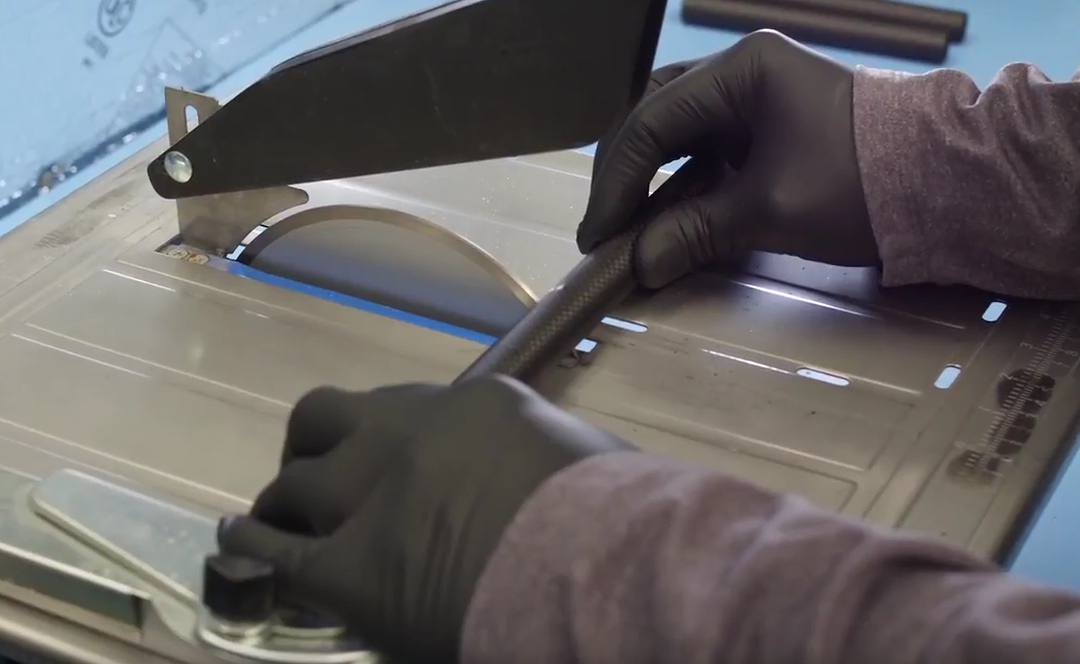One of the challenges when working with carbon fiber is cutting it effectively and safely due to the hardness of the material and the dust it creates which can cause irritation both from the fibers and resins it is made from.
Using a fine toothed saw such as a hacksaw or hobby saw can work but can quickly dull the blade and can chip and leave a splintered rough edge. Rotary tools with a cutoff wheel can be used but create dust and can result in an uneven cut. (If using a handsaw or rotary tool, taping over the area to be cut with masking tape can help reduce chipping and splinting and make the line more visible.)
A readily available solution that addresses these issues is a wet tile saw with diamond blade, more commonly used for cutting ceramic tile. A tile saw is an ideal tool for cutting carbon and glass fiber rods and tubes as well as sheet materials and can be found at most home renovation and hardware stores for around $100.
The wet saw controls the dust produced via the built in water basin system which the blade runs through. The toothless abrasive diamond blade cuts though the hard material quickly and minimizies splintering to product a clean cut. The built in fence and miter guide ensure a straight and square cut.
When the cuts are complete fine sandpaper or a file can be used to cleanup the rough sharp edges if required. If you are concerned with the finished edge being open to possible moisture, or to help prevent future chipping/splintering, the cut area can be sealed with a thin coat of CA or epoxy simply wiped along the cut edge.
Whenever working with materials like carbon fiber be sure to wear a dust mask or ideally a respirator and and eye protection.
Protective gloves, such as those made from Nitrile, are also a good idea to help avoid with small splinters and dust when handling the material which can have sharp edges. Long sleeve clothing should also be worn to avoid contact with skin of the arms.
If you do get particles on your skin, always wash off with cold water instead of warm to avoid opening the pours in the skin.
A dust extraction system if available should also be used to remove any particles from the air and have good ventilation in the area where the cutting is being done.


